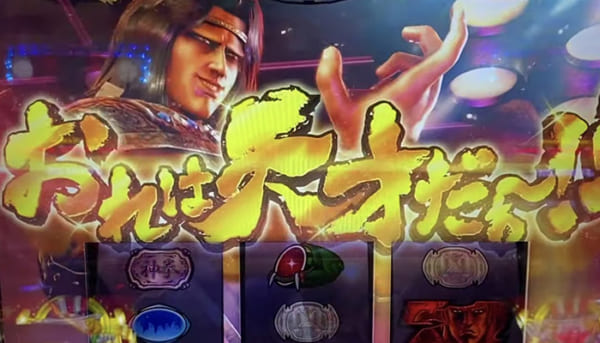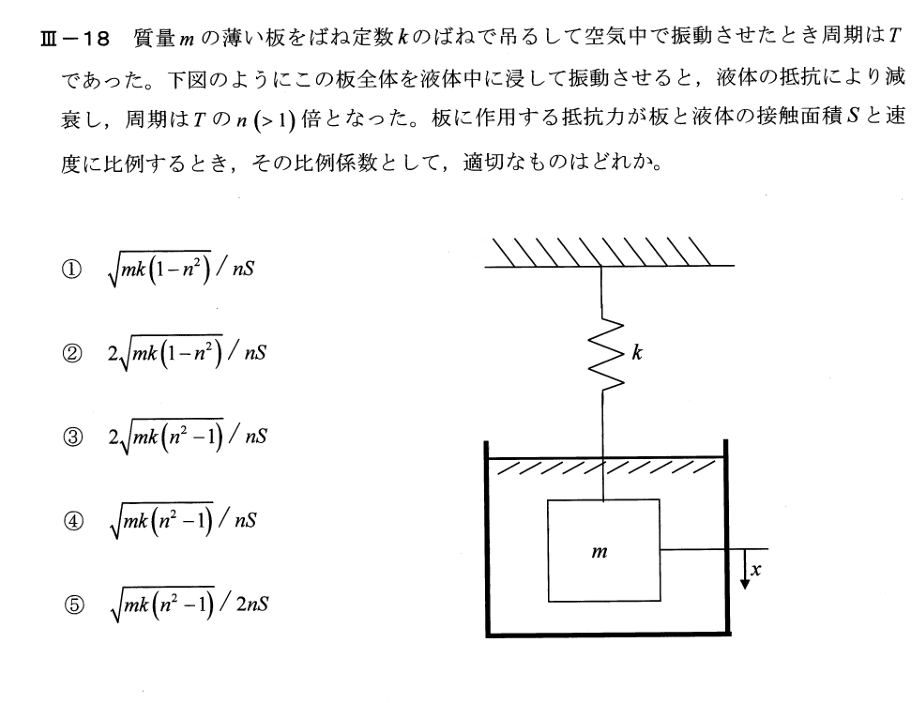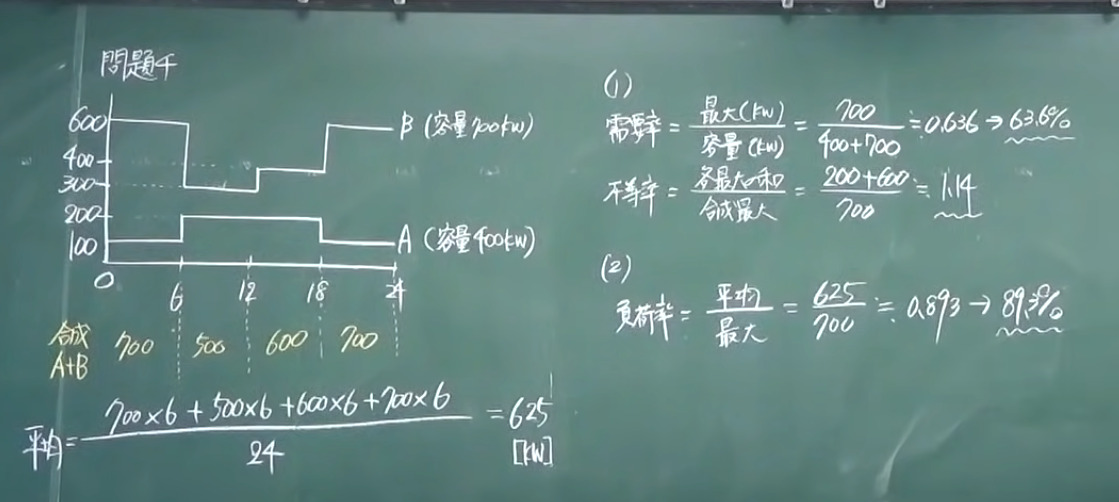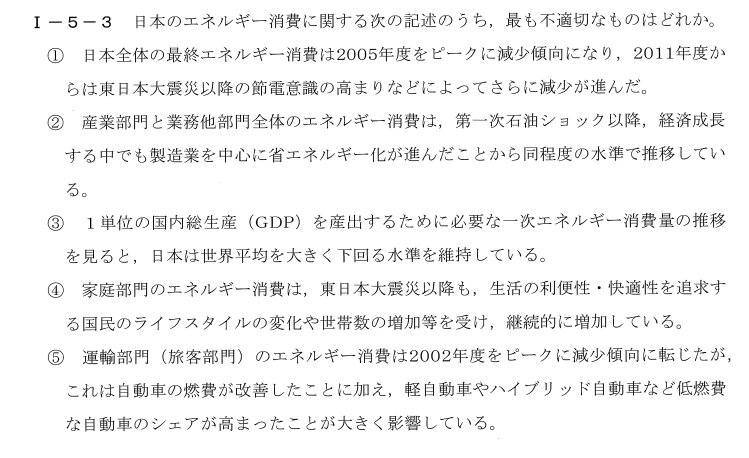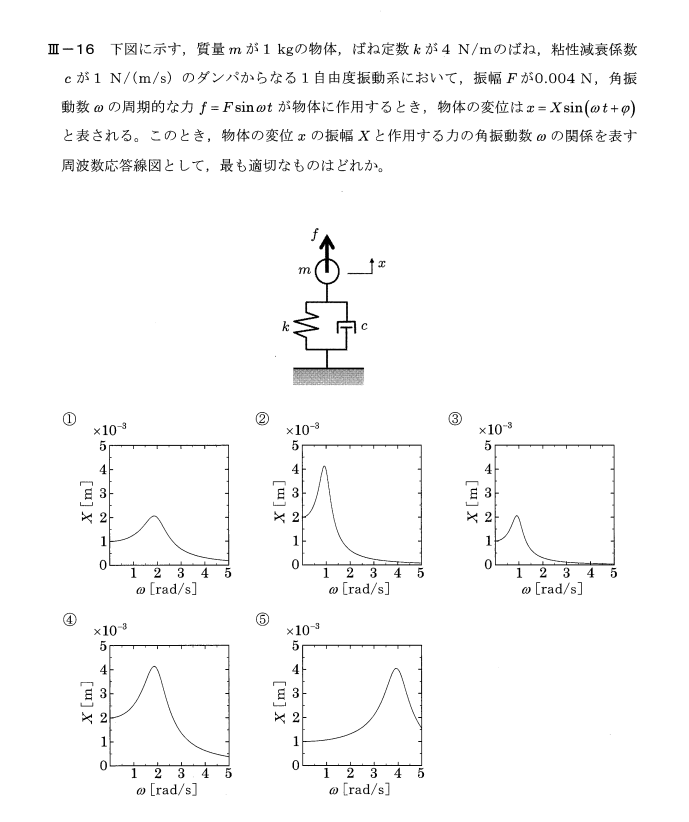ABSTRACT
Fueled in part by the wealth recently created from digital currencies, major art dealers such as Christie’s and Sotheby’s have embraced the sale of non-fungible tokens attached to unique digital works of art. What are non-fungible tokens, how is this related to the blockchain and what do we know about this rapidly evolving market for digital art? It appears that digital art can be added to the growing list of uses for blockchain technology now becoming a part of modern life. This article proceeds in seven parts. First, is a discussion about the new and explosive market for digital art. Second, I explore the evolution of the digital world and virtual property. Third, is an explanation and historical account of the blockchain and virtual currencies. Fourth, is coverage about non-fungible tokens. Fifth, is a brief look at unresolved issues impacting the law of NFTs and potential solutions are provided. Sixth, are a few thoughts about the future of digital property. And last, I conclude. This dramatic extension of blockchain and other digital technology to the world of art and music represents a new and exciting platform for creative expression. I believe this paper offers a valuable addition to the literature by providing a readable introduction and overview of what is now known about the likely impact of blockchain technology and non-fungible tokens to music and art. This important development should have a significant impact on the future of innovation and property law. Keywords: art, Beeple, bitcoin, blockchain, Christie’s, climate, collectibles, Coin Desk, copyright, crypto asset, cryptocurrency, CryptoPunks, crypto-theft, digital art, ethereum, intangible, intellectual property, law, music business and publishing, Nifty Gateway, nonfungible tokens (NFTs), online payment systems, ownership, possession, property law, Second Life, smart contract, Sotheby’s, synthetic worlds, token, virtual property, virtual real estate,最近のデジタル通貨による富の創出もあり、大手美術品販売会社 Christie'sやSotheby'sでは、ユニークなトークン(非可溶性トークン)の販売に取り組んでいます。デジタルアート作品 非可溶性トークンとは何か、ブロックチェーンとの関係は?この急速に発展するデジタルアート市場について、私たちは知っているのでしょうか?デジタルアートは ブロックチェーン技術は、現代人の生活の一部となりつつあり、その用途はますます広がっています。
この記事は7つのパートで構成されています。まず、爆発的な広がりを見せる新しい市場である
デジタルアート 第二に、デジタル世界と仮想財産の進化を探る。3つ目は、以下の通りです。
ブロックチェーンと仮想通貨についての解説と歴史的な説明。4つ目は
非可溶性トークンについて 5つ目は、NFTの法律に影響を与える未解決の問題点を簡単に紹介することです。
と解決策を提供します。6つ目は、デジタル技術の将来についての考察です。
財産である。そして最後に、結論を述べる。
ブロックチェーンをはじめとするデジタル技術の芸術・音楽の世界への劇的な広がりは
は、創造的な表現のための新しくエキサイティングなプラットフォームであることを表しています。私は、この論文が
を読みやすく紹介し、その概要を説明することで、文献への貴重な追加となる。
ブロックチェーン技術と非可溶性トークンが音楽に与えそうな影響について、現在知られていること
とアート。この重要な進展は、今後のイノベーションのあり方に大きな影響を与えるはずである。
と財産法。
キーワード:アート、ビープル、ビットコイン、ブロックチェーン、クリスティーズ、風土、収集品、コインデスク。
著作権、暗号資産、暗号通貨、CryptoPunks、クリプトセフト、デジタルアート、イーサリアム
無形、知的財産、法律、音楽ビジネス・出版、ニフティゲートウェイ、非可溶性トークン(NFT)、オンライン決済システム、所有権、占有、財産法、セカンド
ライフ、スマートコントラクト、サザビー、合成世界、トークン、仮想財産、仮想不動産。
OVERVIEW
On March 11, 2021, Metakovan, a pseudonym, paid $69 million for a piece of unique digital art titled “Everydays - The First 5000 Days,” and paid for it with ether, a cryptocurrency.1 With this landmark purchase fueled in part by the wealth recently created from digital currencies, art buyers, creatives, and investors became suddenly aware of the exploding market for unique digital art. The art world, major traditional art dealers such as Christie’s and Sotheby's, have embraced this new development. The underlying strange brew of cryptography, game theory, interest in art collection, need for the creation of true unique digital ownership interests, and a solid dose of speculative hype has now fermented into a term that has become one of the driving law and technology stories of the year: non-fungible tokens. Also during 2021, $2.9 million was paid “for the NFT of Twitter founder Jack Dorsey’s first tweet, which you can easily see on-line” ‘just setting up my twttr.’”2 What then are non-fungible tokens, how is this related to the blockchain and what do we know about this rapidly evolving market for digital art? It appears that digital art can be added to the growing list of uses for blockchain technology now becoming a part of modern life, such as: accounting and auditing;3 agriculture;4 artificial intelligence (AI);5 business supply chains;6 carbon markets;7 commercial real estate;8 commodity platforms;9 copyrights;10 creative and artistic endeavors;11 economic planning;12 elections;13 fiat money;14 financial services and capital markets;15 and the Internet of Things (IoT);16 just to name a few. But the application of NFTs to art is a central application in a new direction. After all, one bitcoin is much like another. But an NFT equivalent of the Mona Lisa is very different from the NFT equivalent of Action Comics #1. NFT technology leverages digital uniqueness in a way that makes a new social phenomenon possible. There is only one Mona Lisa in the Louvre: owning a copy doesn’t provide the same thrill. This article proposes that pent-up demand for true digital uniqueness -- collectability -- will drive the online market for NFTs to survive the current crypto-crash. Values for digital art will be down in the short term, certainly, as people absorb paper losses from paper gains. But if we mean to say -- as we do mean to say -- that the technology will be more than a flash in the pan, it is worth delving into the roots of the demand for online uniqueness. The demand for oneof-a-kind art has roots as firmly planted online as off, and showing that the demand for digital collectibles has long driven economies in online environments and virtual worlds will help ground the inevitable discussion over whether NFTs are merely a fad or a phenomenon. Our thesis is simple: We believe humans value rarity and uniqueness particularly in a social context. When it comes to art, the value that humans attribute to uniqueness is tied to the strength and breadth of communities that gather around the art, that admire it, value it, and provide social value to those who collect, support, and enjoy it. Collecting art is social. This article will establish that where strong social bonds form online communities around items, whether a community of admirers of Banksy, or the players of an online role-playing game, markets for unique items and arts will arise. Thus we argue that the NFT phenomenon is largely independent of valuation of cryptocurrencies, except to the extent that those who are excited about cryptographic token technologies are more likely to understand and value unique tokens, and in a crypto boom, are more likely to pay eye-grabbing sums. This article proceeds in seven parts. First, we discuss the new and explosive market for digital art. Second, we explore the evolution of the digital world and virtual property. Third, is an explanation and historical account of the blockchain and virtual currencies. Fourth, we explore non-fungible tokens. Fifth, we look briefly at unresolved issues impacting the law of NFTs and provide potential solutions. Sixth, we present a few thoughts about the future of digital property. And last, we conclude. This dramatic extension of blockchain and other digital technology to the world of art and music represents a new and exciting platform for creative expression. We believe this paper is a valuable addition to the literature by providing a readable introduction and overview of what is now known about the likely impact of blockchain technology and non-fungible tokens to music and art. This important development should have a significant impact on the future of innovation and property law.
2021年3月11日、メタコバン(仮名)は、6900万円を支払って、独自の
Everydays - The First 5000 Days」と題されたデジタルアートを、暗号通貨であるエーテルで購入したのです1。
この画期的な購入は、最近デジタル通貨から生まれた富の一部によって促進されました。
アートバイヤー、クリエイター、投資家は、ユニークなアート作品の市場が爆発的に成長していることに気付き
デジタルアート アート界では、クリスティーズやサザビーズといった伝統的な大手美術商が、「デジタルアートの世界へようこそ。
この新たな展開を受け入れています。その根底にあるのは、暗号技術、ゲーム理論の奇妙な醸造物です。
美術品収集への関心、真の意味でユニークなデジタル所有権の創出への必要性、そして
投機的な誇大広告を大量に含むこの用語は、現在では醗酵しており、この言葉を牽引する1つとなった。
非可溶性トークン(non-fungible tokens)。また、2021年中に、290万ドルが
Twitterの創設者であるジャック・ドーシーの最初のツイートをオンラインで簡単に見ることができるNFTのために "支払われた"
'just setting up my twttr.'2 "である。
非可溶性トークンとは何か、ブロックチェーンとどのような関係があるのか、そして私たちは何を知っているのか。
この急速に発展しているデジタルアート市場について知っていますか?デジタルアートは、次のように追加することができると思われます。
ブロックチェーン技術は、現代生活の一部となりつつあり、以下のような用途が広がっています。
会計および監査3
農業4
人工知能(AI)5
ビジネスサプライチェーン6
炭素市場;7
商業用不動産;8
コモディティプラットフォーム;9
著作権;10 クリエイティブと
芸術活動;11 経済計画;12 選挙;13 不換紙幣;14 金融サービスと資本
市場、15、モノのインターネット(IoT)、16などです。しかし、NFTの応用は
アートは、新しい方向性の中心的なアプリケーションです。結局のところ、あるビットコインは別のビットコインとよく似ている。しかし
モナリザに相当するNFTとアクションコミックに相当するNFTは全く異なるものです。
#1. NFTの技術は、デジタルの独自性を生かし、新しい社会現象を起こすものです。
可能です。モナリザはルーブル美術館に1つしかなく、コピー品では味わえない。
スリル満点です。
本稿では、真のデジタルユニークネス、すなわちコレクター性への需要が高まっていることを提案する。
は、NFTのオンライン市場を牽引し、現在の暗号通貨暴落を生き残ることができるだろう。デジタルアートの価値
確かに、短期的には、人々は紙の損失から紙の利益を吸収するため、下落するだろう。しかし、もし
私たちが言いたいのは--私たちが言いたいのは--、この技術は一瞬の出来事以上のものになるだろうということだ。
ネット上の独自性要求の根源を探ってみる価値はあるだろう。一点物の芸術品に対する需要は、オンラインでもオフでもしっかりと根付いていますし、デジタル技術に対する需要も同様です。
オンライン環境と仮想世界では、長い間、収集品が経済を牽引してきました。
NFTは単なる流行なのか、それとも現象なのか、必然的な議論となる。
私たちの考えはシンプルです。人間は特に希少性や独自性に価値を見出すと考えるからです。
社会的文脈 アートに関して言えば、人間がユニークであることに価値を見出すのは、次のようなことに関連しています。
その美術品の周りに集まるコミュニティの強さと広さ、賞賛、価値、そして
それを収集し、支援し、楽しむ人々に社会的な価値を提供します。アートの収集は社会的なものなのです。この
この記事では、強い社会的な結びつきがアイテムを中心としたオンラインコミュニティを形成していることを立証します。
バンクシーを愛する人々のコミュニティであろうと、オンライン・ロールプレイングゲームのプレイヤーであろうと。
ユニークなアイテムやアートの市場が発生する。このように、NFT現象は、ほとんど
暗号通貨の評価とは無関係である。
暗号トークン技術については、ユニークなトークンを理解し、評価する傾向が強いと思われます。
また、暗号ブームでは、目を見張るような金額を支払う可能性が高い。
本稿は7つのパートで構成されている。まず、爆発的な人気を誇る新市場である
デジタルアート 第二に、デジタル世界と仮想財産の進化を探る。3つ目は
ブロックチェーンと仮想通貨についての説明と歴史的な解説。第四に
非可溶性トークン 第五に、NFTの法制度に影響を及ぼす未解決の問題について簡単に考察し、そ
解決策を提供する。第六に、デジタル・プロパティの将来について、いくつかの考えを示す。
そして最後に、結論を述べる。
ブロックチェーンをはじめとするデジタル技術が芸術の世界にも飛躍的に拡大し
音楽は、創造的な表現のための新しくエキサイティングなプラットフォームとなる。我々は、この論文が
を読みやすく紹介し、文献を追加する価値あるものである。
ブロックチェーン技術や非可溶性トークンが音楽に与えそうな影響について、現在知られていること
とアート この重要な進展は、今後のイノベーションのあり方に大きな影響を与えるはずである。
と財産法。
I. MARKET FOR DIGITAL ART EMERGES
On March 13, 2021, The Wall Street Journal reported a first sale of an entirely digital work by auction house Christie’s, creating “a frenzy in crypto asset markets by paying a record sum for… artwork that exists only digitally. Its authenticity is verified primarily because it carries an NFT, or digital proof of purchase that is recorded on a digital ledger known as a blockchain.”17 The NFT Gold Rush According to Christie’s, “a cryptocurrency investor based in Singapore called Metakovan won Beeple’s $69 million digital collage at auction ̶a sale that smashed records in markets for both art and non-fungible tokens, or NFTs.” 18 As reported: Metakovan is the founder of Metapurse, a crypto-based investment firm. [A spokesman for Metkovan known as] Twobadour said that their fund outbid dozens of rivals over the course of the 15-day online contest to win Beeple’s pixilated amalgamation of irreverent drawings and fantastical landscapes that the artist combined into a single collage called ‘Everydays: The First 5000 Days’… NFTs are all the rage now, but Twobadour, who spoke on Metakovan’s behalf as the fund’s steward said he and his partner have spent the past several years focused on amassing what might be the world’s biggest collection of tokenized collectibles and art, worth nearly $120 million combined, with Beeple serving as its star. Four months ago, the fund paid $2.2 million for a different set of 20 Beeple works on the online marketplace Nifty Gateway… The artist [Beeple], whose real name is Mike Winkelmann, is known for completing a new work each day for the past 13 years and counting… Metapurse has been able to scoop up Beeple’s works at such high prices because Metakovan was an early investor in cryptocurrencies, starting around 2013… After buying that previous set of 20 Beeple works in December [2020], they bought land in digital gaming spaces and built museums to display the images before minting tokens off the virtual experience they created. An initial 1.6 million tokens of B.20 were sold at 36 cents apiece. By [March 12, 2021] the cost of one token had risen to $16.35, giving the tokens a collective worth of 163.5 million, according to Coinmarketcap.com.19 Reports document that just a month before, digital art depicting “Donald J. Trump facedown in the grass, covered in words like ‘loser,’ sold for $6.6 million, a record for a nonfungible token, or NFT… Fittingly, the image was paid for in Ethereum, a form of cryptocurrency that, among millennials, is almost as well known as Bitcoin.”20 Although U.S.- centric, The New York Times provides a potential explanation for this phenomenon by observing “Rather than elbowing past one another for reservations at the latest restaurants… or getting into bidding wars for apartments at 740 Park Avenue, they are one-upping one another in online auctions for jewelry, watches, furniture, sports cards, vintage cars, limited-edition Nikes and crypto art.”21 A Christie’s spokesperson indicates their shift in strategy “ahead of the NFT boom, but the sudden popularity of the digital medium indicated that the art world was primed for an overhaul. ‘People are collecting art differently now, and it’s time for some radical changes.”22 Exhibit 1 depicts an image of Beeple’s EVERYDAYS: THE FIRST 5000 DAYS, 2021.23 Evident now, “The art market, coming off a pandemic year marked by sluggish sales, also sees an opportunity to cozy up to a largely untapped audience of crypto-millionaires.”25 The Wall Street Journal reports: Christie’s is capitalizing on the momentum by reorganizing its sales in May in part to appeal to millennials and cryptocurrency investors who want more emerging art and NFTs, the house said. Instead of labeling its two biggest sales by their artistic styles ̶ like impressionist-modern and postwar-contemporary ̶ Christie’s will slot its offerings by time frame, specifically the 20th century and 21st century.26 Bids from more than 30 were received, resulting in a winning offer of “350 Ether, or about $560,000.27 Accordingly, Mr. Roose writes, “I listed it on Wednesday morning, and before I went to bed that night, the top bid had risen to more than $30,000. When I woke up the next morning, it was $43,000. In the final hour of the auction… a bidding war broke out.”28 Bids from more than 30 were received, resulting in a winning offer of “350 Ether, or about $560,000. A few minutes later, after the auction platform had taken its cut, nearly $500,000 in cryptocurrency landed in my digital wallet.”29 Exhibit 2 is an image of Mr. Roose’s winning art. Mr. Roose reflects: Some NFT collectors believe that owning early, prominent crypto-tokens, will eventually be like owning rare, first-edition books or priceless paintings. [NFT collector] Mr. Ouyang admitted that the value of my NFT was ‘still highly speculative and subjective.’ But he said he believed that NFTs and other blockchain-based technologies would ultimately reshape the entire media landscape, allowing creators to reimagine how they create and monetize their works. This particular NFT from The New York Times is one of the answers and will become a historical landmark in this inevitable movement,’ he said. ‘That’s why I think it is valuable.’30 On May 28, 2021 we read about historical documents of interest being monetized by the University of California at Berkeley. According to The New York Times, UC Berkeley’s plan is to “auction the first of two digital art… NFTs. The object being offered is based on a document called an invention and technology disclosure. That’s the form that researchers at Berkeley fill out to alert the University about discoveries that have the potential to be turned into lucrative patents.”32 Originating in 1996: The title of the invention… is ‘Blockade of T-Lymphocyte Down-Regulation Associated with CTLA-4 Signaling.’ The University hopes that potential bidders will be attracted to an early description of a revolutionary approach to treating cancer developed by James P. Allison, then a professor at Berkeley. He found a way to turn off the immune system’s aversion to attacking tumors and he showed that it worked in mice. That advance eventually led to the creation of Yervoy, a drug for the treatment of metastatic melanoma, and Dr. Allison, who is now at the MD Anderson Cancer Center at the University of Texas, shared the Nobel Prize in Medicine in 2018. Thus, the Berkeley disclosure form could be thought of as the scientific equivalent of Mickey Mantle’s rookie baseball card - a memento of the beginnings of greatness. ‘I think of it almost as a history of science artifact,’ said Richard K. Lyons, the chief innovation and entrepreneurship officer at Berkeley. ‘Imagine somebody saying, ‘I want to own the NFTs for the 10 most important scientific discoveries of my lifetime.’” A 24-hour auction of the NFT of Dr. Allison’s invention disclosure will take place as early as June 2 [2021] using Foundation, an NFT auction marketplace that uses Ethereum, the cryptocurrency network of choice for NFT collectors. Eighty-five percent of the proceeds will go to Berkeley to finance research, the remainder to Foundation. If the piece is later resold, Berkeley will receive 10 percent of the sale and Foundation 5 percent. Because the making of an NFT requires a lot of computing power, part of the money the university earns from the NFT sale will be used for carbon offsets to compensate for the energy consumed, Berkeley officials said. The second NFT that Berkeley plans to auction in the coming weeks will be the disclosure form describing the CRISPR-Cas9 gene editing invention by Jennifer A. Doudna, a professor of molecular and cell biology at Berkeley. She shared the 2020 Nobel Prize in Chemistry with Emmanuelle Charpentier of the Max Planck Unit for the Science of Pathogens for their work on technique.33
2021年3月13日、ウォール・ストリート・ジャーナル紙は、完全にデジタル化された初出品の
オークションハウスであるクリスティーズは、「暗号資産市場に記録的な金額を支払い、熱狂を引き起こした」。
デジタルでしか存在しない芸術作品を高額で購入することができます。その真正性が確認されるのは、主に
NFT(デジタル購入証明書)はデジタル台帳に記録されます。
ブロックチェーン」17
NFTゴールドラッシュ
クリスティーズによると、「シンガポールを拠点とするメタコバンという暗号通貨投資家が
ビープルの6900万ドルのデジタルコラージュをオークションで落札した。
美術品と非可溶トークン(NFT)の両方です。"
18 報告されている通りです。
Metakovanは、暗号ベースの投資会社であるMetapurseの創設者である。[A
メトコバンのスポークスマンである[Twobadour]は、彼らのファンドが競争相手を打ち負かしたと述べた。
15日間のオンラインコンテストで、数十人のライバルがBeepleを獲得しました。
不遜なドローイングと幻想的な風景画のピクシスアマルガム(混合物)。
という1枚のコラージュにまとめました。The First 5000 Days」...
今、NFTが流行っていますが、メタコバンの代弁者であるトゥーバドールは
このファンドのスチュワードとして、彼と彼のパートナーは過去数年間を費やしてきたという。
世界最大級のトークン化されたコレクションを集めることに専念しています。
ビープルを中心に、約1億2千万ドル相当の収集品や美術品がある。
その主役は 4ヶ月前、同ファンドは220万ドルを支払って、別の20組の
オンラインマーケットプレイス「ニフティ・ゲートウェイ」でビープルの作品を...
アーティスト(Beeple)の本名はMike Winkelmannで、次のようなことで知られています。
過去13年間、毎日新作を発表し続け、現在に至る・・・。
がBeepleの作品を高値ですくい上げることができたのは、メタコバン
は、2013年頃から暗号通貨に早くから投資していたのです...。
その前のビープルの作品20点セットを12月(2020年)に購入し
デジタルゲーム空間と、画像を展示する美術館を建設し、造幣局を設立する。
トークンは、自分たちが作り出した仮想体験のために作られたものです。最初の160万トークンの
B.20を1枚36セントで販売した。2021年3月12日]までに、1つのトークンの値段は
16.35ドルまで上昇し、トークンの総価値は1億6350万ドルに達したとされています。
Coinmarketcap.com.19
報道では、ちょうど1ヶ月前に「ドナルド・J・トランプ」が描かれたデジタルアートが記録されている。
草むらにうつ伏せになり、「loser」などの文字で覆われたこの画像は、660万ドルで落札され、nonfungible token(NFT)としては最高値となった。
暗号通貨は、ミレニアル世代の間ではビットコインと同じくらい有名である」20 。
米国中心ではあるが、ニューヨーク・タイムズ紙は、この現象を説明する可能性を次のように観察している。
「最新のレストランを予約するために互いに譲り合うよりも、......。
パークアヴェニュー740番地のアパートの入札合戦で、彼らはオンラインで互いに競い合っている。
宝石、時計、家具、スポーツカード、ヴィンテージカー、限定版NIKEなどのオークションで
21 クリスティーズの広報担当者は、「NFT ブームを先取りした」戦略の転換を示唆している。
しかし、デジタルメディアの急激な普及は、美術界が変革の時期を迎えていることを示唆していた。
オーバーホール 人々は今、異なる方法でアートを収集しており、根本的な変化の時期に来ているのです」22。
展示物1には、ビープルの「EVERYDAYS」のイメージが描かれています。最初の5000日、2021年)23
今、明らかになったのは、「売上低迷のパンデミックイヤーから脱却したアートマーケット。
また、暗号化された億万長者というほとんど未開拓の聴衆に寄り添う機会もあると考えている25。
ウォール・ストリート・ジャーナルが報じている。
クリスティーズはこの勢いに乗じて、5月に開催されるセールを再編成している。
ミレニアル世代や暗号通貨投資家にアピールするために、より多くの
新興の美術品やNFTがあるとのことです。2大セールスのラベルを付ける代わりに
印象派-近代、戦後-現代といった芸術的スタイル
クリスティースは、20世紀と21世紀という時間軸で商品を分類する予定です。
世紀26
30人以上から入札があり、落札価格は「350エーテル、すなわち
27 したがって、ルース氏は「水曜日の朝に出品して、その前に
その夜、私が寝ると、最高入札額は3万ドル以上まで上がっていた。翌日、目が覚めたとき
朝、43,000ドルになっていた。オークションの最後の1時間で......入札合戦が始まった」28。
30人以上が集まり、「350Ether、約56万円」が落札価格となった。A
数分後、オークションプラットフォームが利益を得た後、50万ドル近くの暗号通貨が投入されました。
29 別紙 2 は、ルース氏の受賞作品の画像である。ルース氏
を振り返る。
NFTのコレクターの中には、初期の著名なクリプトトークンを所有することは、将来的に
いずれは、希少な初版本や貴重な絵画を所有するようなものです。[NFT
コレクター]。欧陽氏は、私のNFTの価値は「まだ非常に高い」と認めています。
投機的で主観的なもの」。
しかし、彼はNFTやその他の
ブロックチェーンを利用した技術は、最終的にメディア全体の形を変えるでしょう。
クリエーターは、自分の作品をどのように作り、どのように収益化するかについて再考することができます。
作品です。
このニューヨーク・タイムズの特別なNFTは、その答えの一つであり
は、この必然的な動きの中で歴史的なランドマークとなることでしょう』と述べています。それが
だから価値があると思うのです」30。
2021年5月28日、興味深い歴史的文書がマネタイズされていることを読みました
は、カリフォルニア大学バークレー校が運営する ニューヨーク・タイムズ紙によると、カリフォルニア大学
バークレー校の計画は、「2 つのデジタルアート...NFT のうち、最初のものをオークションにかける」ことだそうだ。出品されるのは
提供されるのは、発明・技術開示と呼ばれる文書に基づくものです。これは
バークレー校の研究者が、以下のような発見をした場合に大学に報告するために記入する書式です。
特許になる可能性がある」32 1996年発祥。
発明の名称は、「Tリンパ球のダウンレギュレーションを阻害する」である。
CTLA-4シグナルに関連した」。大学は、入札希望者が
を治療するための革命的なアプローチの初期の記述に惹かれるでしょう。
当時バークレー校の教授だったジェームス・P・アリソンによって開発されたがん。彼は
腫瘍を攻撃しようとする免疫系の嫌悪感をオフにする方法を紹介し
マウスで実験したところ、うまくいきました。
その進歩は、やがてヤーボイという治療薬の誕生につながりました。
転移性メラノーマの治療で、アリソン博士は現在、MD
テキサス大学アンダーソンがんセンターは、ノーベル賞を共同受賞しました。
2018年の医学界では このように、バークレーの開示様式は、次のように考えることができる。
ミッキー・マントルの野球のルーキーカードに相当する科学的な記念品です。
偉大なる存在の始まりです。ほとんど科学史の遺物だと考えています」と
バークレー校のチーフ・イノベーション&アントレプレナーシップ・オフィサー、リチャード・K・ライアンズ氏。
誰かが、"最も重要な10個のNFTを所有したい "と言ったと想像してください。
私の生涯の科学的発見" 博士のNFTの24時間オークションが開催されます。
アリソンの発明開示は、早ければ6月2日[2021年]に、以下を使用して行われます。
暗号通貨イーサリアムを利用したNFTオークション市場「Foundation」。
のネットワークは、NFTコレクターに選ばれています。
収益の85%はバークレー校に寄付され、資金調達に充てられます。
研究、残りは財団に寄付されます。この作品が後に再販された場合、バークレー校は
売上の10%、財団が5%を受け取ります。というのも
NFTには多くの計算能力が必要です。
NFTの販売で得た資金は、エネルギー消費を補うためのカーボンオフセットに使用されます。
バークレー校の関係者によると、消費された バークレー校がオークションにかける予定の2つ目のNFTは
今後数週間のうちに、CRISPR-Cas9を記述した開示書式が公開される予定です。
遺伝子編集の発明者であるジェニファー・A・ダウドナ(分子・細胞学教授)。
バークレー校の生物学 彼女は、2020年のノーベル化学賞を、以下の方々と共有しました。
マックス・プランク病原体科学ユニットのエマニュエル・シャルパンティエは、その功績で
技術に関する彼らの仕事33
History of Digital Art
Christie’s provides a history of digital art, “dating back to the 1960s. But the ease of duplication traditionally made it near-impossible to assign provenance and value to the medium.” During November 2018, Christie’s first transaction of this type took place, “when it registered the entire 42-lot Barney A. Ebsworth Collection of 20th -century American Art on the Artory blockchain. The collection totaled more than $322 and marked the first time an art auction at this price level had been digitally recorded.” Robert Alice’s Block 21 was offered by Christie’s during October, 2020, “as part of its Post War & Contemporary Art Day sale… The first work of art with an embedded NFT to be offered at a traditional auction house, the lot attracted nontraditional bidders and crypto enthusiasts alike ̶and sold for almost 11 times its low estimate.”34 Christie’s states: The recent introduction of Non-fungible tokens (NFTs) and blockchain technology has enabled collectors and artists alike to verify the rightful owner and authenticity of digital artworks. EVERYDAYS: THE FIRST 5000 DAYS will be delivered directly from Beeple to the buyer, accompanied by a unique NFT encrypted with the artist’s unforgeable signature and uniquely identified on the blockchain.35 Additional transactions taking place before the Christie’s $69 million Beeple’s sale are reported by financial journalist Jason Zweig who notes, “In February [2021], an NFT representing the Nyan Cat video meme, which looks like a feline Pop-Tart dragging a rainbow through outer space, sold for more than $500,000. A video NFT of LeBron James dunking a basketball sold for $208,000.”36 Rapid technological changes brought about by significant product developments such as the Gutenberg Press often help facilitate Renaissance-like artistic creativity. The Gutenberg “formation of the printing press in the fifteenth century paved the way for mass production of texts and images. With new communication capacity being enabled by this technological advancement, the widespread of material and intellectual exchange becomes possible.”37 Inmodern times, “many of the working approaches used by digital artists can be traced back to the early days… of computer development. Since the emergence of the World Wide Web in the 1990s, a diverse variety of opportunities were further opened for visual arts with seemingly infinite permutable dimensions.”38 Bo Xing attributes the emergence of digital art to three primary factors: Firstly, it is such a common practice for artists, in particular young professionals, to use a wide range of media arts for creative purposes, producing static/dynamic images, as well manipulating sound tracks and text scripts; [S]econdly, digital art is not an isolated practice, divided from other forms of arts. It is essentially a methodology that incorporates all types of interconnections with other art exercises together with other manner of presentations and enquiries, illustrating that we are witnessing and experiencing a new wave of creative revolution; [and] [L]ast but not the least, it is worth noticing that an army of digital artists are now working in numerous industries shoulder to shoulder with hardware and software practitioners at the forefront of innovation.39 Just as in the physical world, the advent and growth of the electronic social spaces, from games like World of Warcraft to blockchain-based environments like Decentraland, to the social bubbles of Twitter have fostered a need for online value, both in terms of currency and payment, and in terms of unique digital assets to hold that value. Paying fungible currency--dollars--for a unique creation--art--is a loop we have not yet experienced in the present economy. Our economies remain half online, half off. While current laws and the scope of regulations struggle to keep up with rapid technological change, policy makers and criminal enforcement officials face significant new challenges. According to Harvard professor Jonathan Zittrain and researcher Will Marks, in sum, an NFT’s “first buyer is getting three things: the warm feeling that may accompany financing an artist; the pride that comes with claiming a relationship to a digital artifact and its creator; and perhaps most tangibly, an asset that can be traded…”40 Consider: The buyer is not, however, acquiring that they alone can use. In the physical world, if you purchase a candy bar, you can’t give someone a piece of it without losing a few bites of your own. That makes your freedom to take a bite valuable, because the bar has only so much chocolate. By contrast, an NFT buyer is not purchasing a work, but rather a publicly available token that links to a work. For example, for a digital picture, the token may be a unique number and a link to a copy of the picture, hosted on a service such as IPFS. The token itself is visible to all, as is the work to which it points, so anyone else can look at the work and download it. And most NFT transactions don’t purport to convey copyright or other intellectual-property interests regarding the work in question, so owning an NFT tied to an animation of, say a flying Pop-Tart cat doesn’t put you in a position to use that animation any differently than someone who hadn’t bought it. You have only a token that is hosted publicly online, ‘registered’ as assigned to your digital wallet rather than someone else's. If you orchestrate your wallet through an app, the app might present you with a handsome visual trophy case listing the NFTs that you’ve purchased. (As you can see, we’re having to reach to describe unique value..) 41 Christie’s announced the sale of works made during the mid-1980s by Andy Warhol that were recovered from obsolete floppy disks during 2014. These five original Andy Warhol works, existing previously only as digital files “will be brought to life again as 1 / 1 NFTs… They are being offered for sale individually by Christie’s on behalf of the Andy Warhol Foundation for the Visual Arts established by Warhol.”42 The online sale ran on Christie’s website from May 19, 2021 to May27th.43クリスティーズは、デジタルアートの歴史を「1960年代にまでさかのぼる」と紹介しています。しかし、簡単に
複製は従来、メディアに出所と価値を割り当てることは不可能に近かった。"
2018年11月中、クリスティはこのタイプの最初の取引を行い、"登録時に
バーニー・エブズワース・コレクションの全作品(42ロット)は
-のアメリカ美術をArtoryに掲載
ブロックチェーン このコレクションは総額322ドル以上であり、この規模の美術品オークションは初めてでした。
価格水準がデジタルで記録されました。" ロバート・アリスのブロック21は、クリスティーズによって提供されました。
2020年10月、「戦後・現代美術の日」セールの一環として開催された。
NFT を組み込んだアートが伝統的なオークションハウスで提供され、非伝統的な入札者や暗号ファン を魅了し、最低見積額の約 11 倍で落札されました」34。
クリスティーズはこう述べています。
近年、非可溶性トークン(NFT)とブロックチェーンが導入され、その普及が進んでいます。
技術により、コレクターやアーティストが正当な所有者と確認できるようになりました。
デジタルアート作品の真贋判定 EVERYDAYS: THE FIRST 5000 DAYS」は、以下の通りです。
ビープルから購入者に直接、ユニークなNFTを添えてお届けします。
アーティストの偽造不可能な署名で暗号化され、一意的に識別される。
ブロックチェーン35
クリスティーズの6900万ドルのビープルの販売前に行われた追加の取引は、以下の通りである。
金融ジャーナリストのジェイソン・ツヴァイクは、「(2021年)2月に、NFT
ネコのポップタルトが虹を引きずっているように見えるニャンキャットのビデオミームを表現しています。
は50万ドル以上で落札されました。レブロン・ジェームズがダンクをする動画NFTは
バスケットボールが 208,000 ドルで売れた」36。
のような重要な製品の開発によってもたらされる急速な技術的変化。
グーテンベルク・プレスは、ルネッサンス期のような芸術的創造性を促進させることが多い。グーテンベルク
「15世紀に印刷機が誕生し、大量生産への道が開かれた。
文字や画像。この技術によって可能になった新しいコミュニケーション能力で
現代では、「デジタル・アーティストが使用する作業アプローチの多くは、その起源をたどることができる」37。
コンピュータ開発の黎明期。ワールド・ワイド・ウェブが出現したのは、1960年代のことである。
1990年代には、視覚芸術の多様な可能性がさらに開かれました。
ボー・シンは、デジタル・アートの出現を次の3つの要因によると考えている。
主な要因は以下の通りです。
第一に、アーティスト、特に若いプロフェッショナルにとって、それはごく普通のことである。
創造的な目的のために幅広いメディアアートを使用し、静的/動的な作品を制作する。
また、映像や音声、文字原稿を操作することもできます。
[第二に、デジタル・アートは、他の芸術と切り離されたものではありません。
それは本質的に、他の芸術とあらゆる種類の相互接続を組み込んだ方法論である。
また、他の芸術活動、他のプレゼンテーションや探求の方法もあります。
私たちは今、創造的な新しい波を目撃し、経験しているのです。
アーティスト、デジタルアーティファクトとそのクリエイターとの関係を主張することで得られるプライド、そして
おそらく最も明白なのは、取引可能な資産である...」40 と考える。
しかし、買い手は、自分だけが使えるものを手に入れるのではない。物理的な
世界では、もしあなたがキャンディーを購入したら、その一部を誰かにあげることはできません。
自分の分を少し失うことになる。その分、一口で食べられる自由は貴重です。
チョコレートの量が少ないからです。
これに対し、NFTの購入者は作品を購入するのではなく、公的に利用可能なものを購入します。
作品にリンクしている利用可能なトークンです。例えば、デジタル写真の場合、そのトークンは
は、一意の番号と、サービス上でホストされている画像のコピーへのリンクである可能性があります。
IPFSのような トークン自体は、それが指す作品と同様に、すべての人が見ることができます。
誰でも作品を見ることができ、ダウンロードすることができる。また、ほとんどのNFT取引
著作権やその他の知的財産権を譲渡するものではありません。
のアニメーションに関連するNFTを所有することができます。
ポップタルトの空飛ぶネコを使っても、そのアニメーションを使用できる立場にはない。
買っていない人とは違うのです。あなたが持っているのはトークンだけです。
オンラインに公開され、自分のデジタルウォレットに割り当てられたものとして「登録」されています。
他人のものです。アプリでウォレットを管理すれば
トロフィーケースは、あなたが所有するNFTを一覧できるように、ハンサムなビジュアルで表示されます。
購入しました。(ご覧の通り、ユニークな価値を表現するのに苦労しています...)。
41
クリスティーズは、アンディ・ウォーホルが1980年代半ばに制作した作品を販売すると発表した。
は、2014年中に旧式のフロッピーディスクから復元されました。これら5つのアンディ・ウォーホルのオリジナル作品。
デジタルファイルとしてのみ存在していたものが、「1/1 NFTとして再び命を吹き込まれる...」。
アンディ・ウォーホル財団に代わり、クリスティーズが個別に販売します。
ウォーホルが設立したビジュアルアーツのオンライン販売は、5月19日からクリスティーズのウェブサイト上で行われた42。
2021 年から 5 月 27 日まで43
